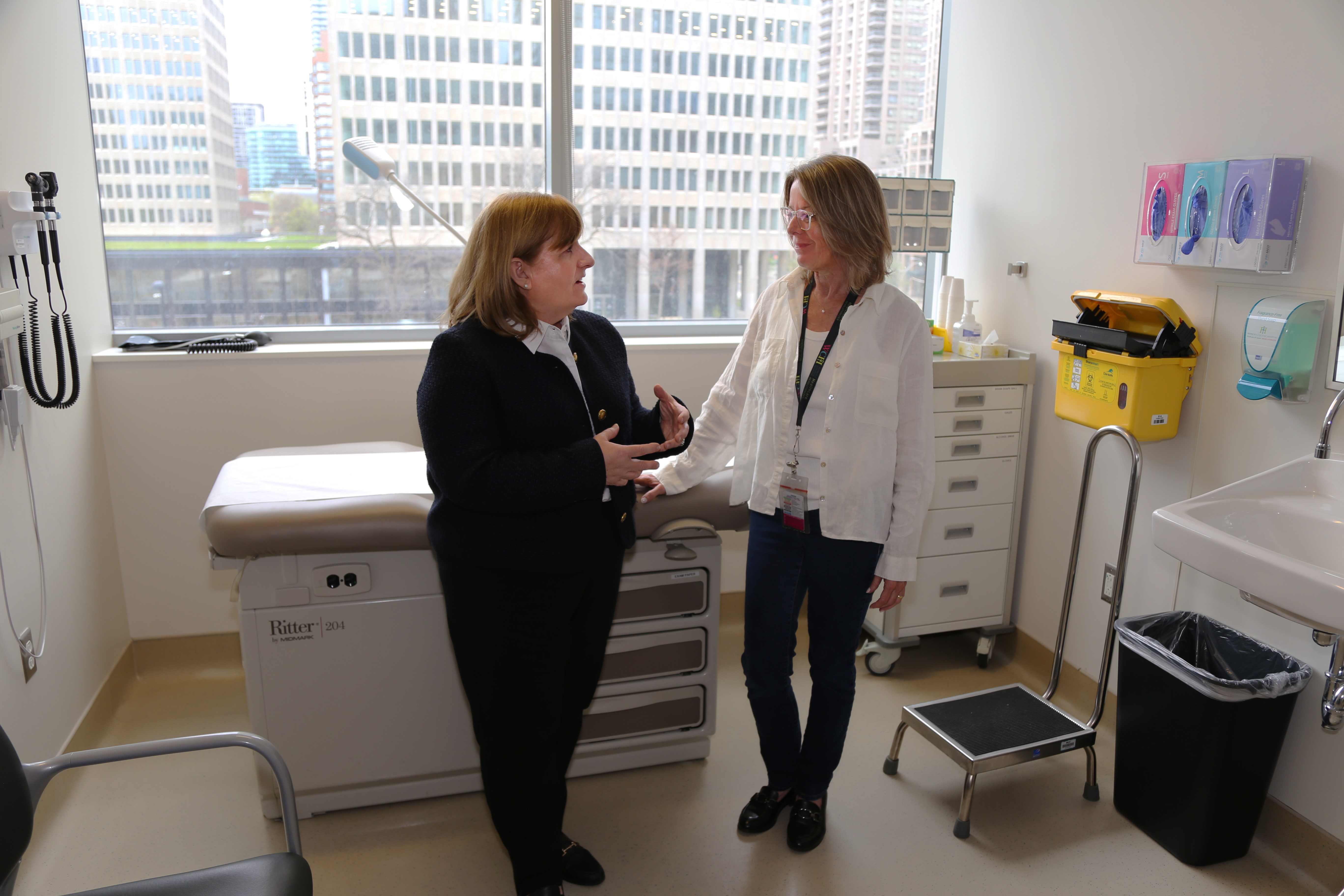Photo caption: Registered practical nurse, Cara Stanley, conducting an orientation session for TAPMI.
By: Sarah Kim
Recent data shows that one in eight Canadians are currently waiting for a health care service. When it comes to accessing specialist care, patients often find themselves on waitlists for months or even years. These delays not only cause significant anxiety and frustration but can also lead to worsened health outcomes if conditions are undiagnosed or untreated during the extended wait.
The Centre for Headache and the Toronto Academic Pain Medicine Institute (TAPMI) at Women's College Hospital (WCH) are transforming the waiting experience for patients by offering proactive strategies and resources that encourage “active waiting." Rather than passively waiting for an appointment, patients are encouraged to stay engaged in their pain management even before their first appointment.
One in four households has someone impacted by migraine in Canada. “Migraine is often discounted as 'just a headache,' but it's a brain disease and one of the most common diseases in the world," says Dr. Christine Lay, Director, Centre for Headache at WCH.

Photo caption: Left to right, Dr. Christine Lay and Valerie Lawler.
In 2009, the Centre for Headache was established at WCH by Dr. Christine Lay and, shortly thereafter, Valerie Lawler, a nurse practitioner, joined the team. Since then, they have trained more than 11 fellows in Headache Medicine who are now practicing in Toronto. Despite this growth, the high demand for care has outpaced the number of specialists available, with patients waiting up to two years for a general appointment.
“We noticed that many people wait to see us only to find out that ibuprofen or acetaminophen were not the most ideal way to manage migraine. There are several medications that, if used too often, can worsen migraine," says Dr. Lay. “Instead, benefit could be achieved through routine sleep, certain vitamins and walking – things that they could have been doing at home."
This led to the development of WCH's first-ever active waiting education program, designed to help patients self-manage their symptoms while waiting for their consultation appointment. The program offers a one-time education session delivered as a 90-minute didactic and interactive presentation, which includes a comprehensive overview of self-management strategies.
“We studied the impact of this program and found that we reduced headache-related ER visits by 50 per cent, which is unheard of. This study was published in 2018 after collecting and analyzing the data over two years. We also found that medication overuse was reduced, and many patients' symptoms were vastly improved by the time they attended their first appointment," says Lawler.
Recently, the program transitioned into weekly virtual sessions with approximately 40 patients per month.
“We request patients complete the education modules so that they are active participants in their care," says Lawler. “We know that patient engagement is a key factor for improved health outcomes."
The active waiting program includes a tracking system to help patients identify the frequency, severity and the associated disability of their migraine attacks.
“Patients can monitor their symptoms, which can include a disabling headache, sensitivity to light, sound or smell, overwhelming fatigue, nausea or vomiting, cognitive fog, and more," says Dr. Lay. “This allows both patient and the clinician to gain a clearer understanding of the problem sooner, which informs treatment decisions."
The active waiting model has expanded at WCH and internationally.
Following the success of active waiting strategies in the headache program, the TAPMI team connected with the nurses at the Centre for Headache to get an understanding of how something similar could work for their patients.
“In January 2024, we introduced low-barrier orientation sessions to our patients," says Cara Stanley, registered practical nurse, TAPMI.
The new orientation session, available in French and English, is facilitated by the TAPMI nursing team who provide education about the TAPMI model of care and its self-management approach to improving function with pain for patients while they wait for their first appointment in the clinic. There are also community-based self-management resources, such as the Power Over Pain Portal, and patients can self-enroll in single-session educational workshops offered through the WCH TAPMI program – all designed to help prepare patients and allow them to be active participants in their care journey.
“We encourage patients to take an active role in their care. We want to set them up for success in their pain management by helping them establish self-management goals and providing the guidance and support needed to achieve them," says Stanley.
Since the implementation of the orientation session, the TAPMI team has met with other self-management programs in Canada to share their knowledge and experience in the development and impact of their sessions.
By redefining the waiting period as an opportunity for proactive education and patient self-care, the Centre for Headache and TAPMI are not only improving patient outcomes but also setting a new standard for patient-centered healthcare. This model of active waiting has the potential to reshape how chronic conditions are managed and ensures that waiting for an appointment is no longer time lost – but time well spent.